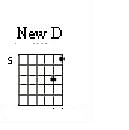
MEASURE 1 is the intro slide
MEASURE 2 begins with the new form of D:
Chapter 12
BIG BILL BROONZY--MISTER GUITAR
He downplayed his single-string backup work, and stressed solo singing and playing. As the post World War II folk audience grew, Broonzy became less of a studio guitarist and more of a "folk blues musician" since this is what the new and larger public wanted.
His playing was so versatile that these pieces sparkle with the combination of great technique and great music. I've chosen RIDIN' ON DOWN and BILL BAILEY as two fhis best.
The hard work you put into learning Spoonful and Baby Let Me Follow You Down is really going to pay off now! The new D from Spoonful shows up right away here--it's a shortened version of the Broonzy D of Baby Let Me Follow You Down.
MEASURE 1 is the intro slide
MEASURE 2 begins with the new form of D:

Slide Left Middle up the 2nd string, fifth fret to the New D.
MEASURE 3:
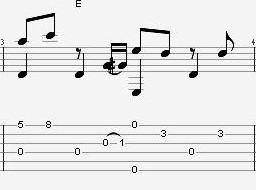
MEASURE 3 MEASURE 4
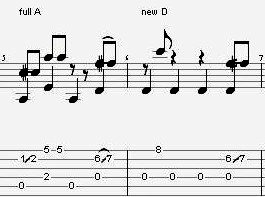 Measure 3:
Measure 3:
Measure 4:
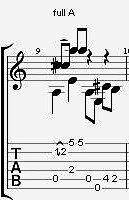
Measure 10 has only one trick:
Use your Ring for the 2nd beat, 2nd
string third fret note. Then stretch your Pinky to play the 3rd beat
fourth fret note on the 1st string. Here's a picture of this John Hurt styled E chord:

This particular piece is currently enjoying renditions by several of today's guitarists, including Eric Clapton. Enjoy it!
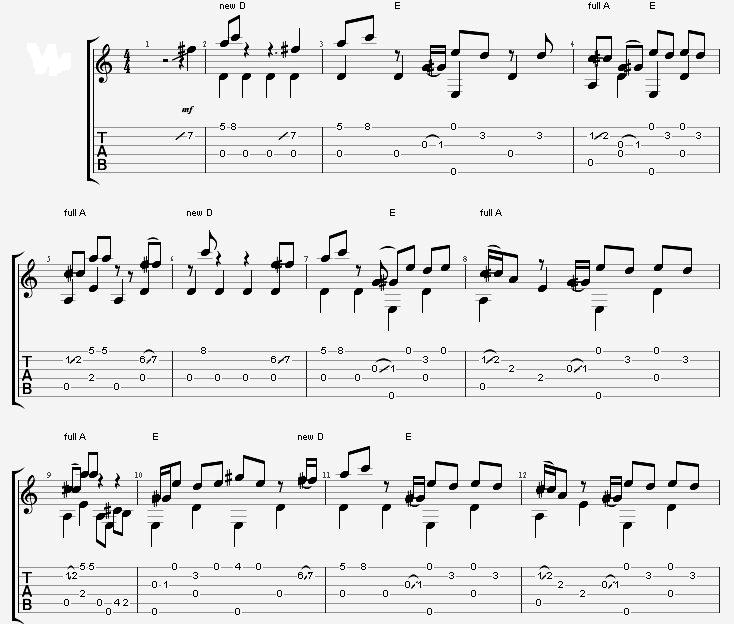

This is one of the most popular tunes in American music. Originally written in 1902, you may have avoided it from all the mediocre versions hacked out by sonambulent wedding bands and accordian trios throughout the English speaking western hemisphere. I beg you, however, to have an open mind--this is a terrific raggy tune, and Broonzy plays the tar out of it. Just to be on the safe side, my arrangement below incorporates some Rev. Davis licks as well.
By the way, I happen to really dig accordian trios...but that story belongs in another book......
Measure 1, Beat 3: Move your Middle down to the 3rd string, second fret
at the same time your Ring moves to the 6th string for the alternate
bass.
Measure 2, Beat 2: Stretch your Pinky to the fourth fret of the 2nd string. If you have to pick your Middle off the 4th string and play that string open, it's O.K. to do so.

Leave the Middle and Ring on at all times. The Index and Pinky can move on and off when needed.
The last beat of Measure 11 starts a "run in C" that moves up the neck, and ends on bass notes on the bottom end:



Measures 16 & 17 are the same as Measures 1 & 2.
In Measure 19,there's a nice Davis lick I carelessy carefully threw into the arrangement:

Measure 20: Move up to the eighth through tenth frets for a "half F" position. Up here it's a C chord. The basses alternate from the fourth to third strings.
Measure 21:
Here's what these two chords look like as standard chord symbols:
C chord--half F position

Am chord--half F position

MEASURE 22: Now this same half barred F position becomes a defacto G
chord, since it's on the third to fifth frets:
MEASURE 22

Measure 22: Play this G by plucking the 1st, 2nd, and 4th strings
together, then play the alternate bass (on the 3rd string).
Beat 3: Now make a normal C, but put your pinky on the 2nd strng fourth fret.
MEASURE 23
Measure 27 is mostly normal C. But for the last beat, Broonzy abandons the chord and slides a finger up to the seventh fret. Use your pinky (which should be on the 1st string third fret at this point):
MEASURE 27
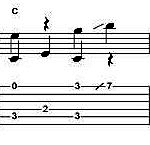
MEASURE 28
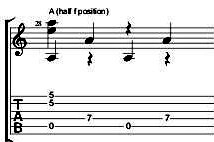
Measure 28 is our old friend the half F position, on the fifth through seventh frets. Just play the alternate bass to fill out the measure.
The rest of the piece is (by now) familiar C, F and G licks. The final measure (G) is similar to a measure in Saturday Night Shuffle in fact. So you should be able to "bring it on home" without the "thought provoking challenges" of the earlier measures. So Bring It On Home-- which is more than can be said of Bill Bailey....

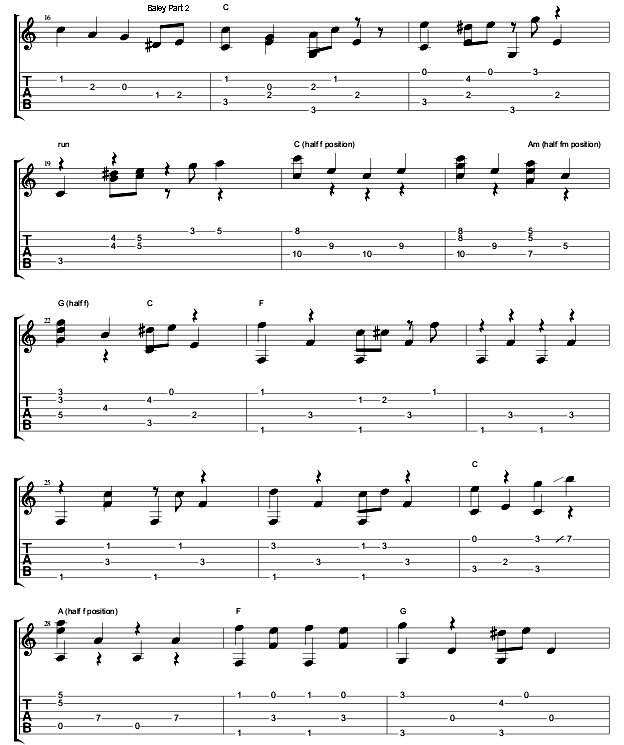

| Back to the Table Of Contents | Trouble reading tablature?: Tablature Help Here |
More info/contact Andy: www.andypolon.com